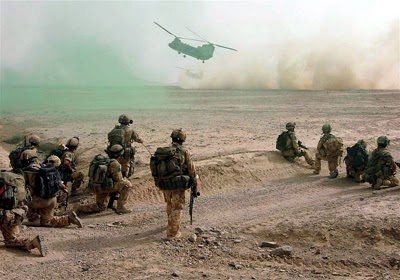NATO took a step closer to getting out of the Afghan war on Sunday as the Kabul government announced local forces would take over control of security in a large new slice of the country.
In the third phase of a five-tranche military transition process, 122 more districts throughout Afghanistan will come under local command, putting Afghan forces in control of security for 75 percent of the population.
Kapisa province, where French troops are based, is one of three provinces designated for a complete handover. French president-elect Francois Hollande pledged during his election campaign to pull France’s 3,400 troops out this year.
NATO has a total of 130,000 soldiers helping the government of President Hamid Karzai fight an insurgency by hardline Taliban Islamists, and they are due to withdraw by the end of 2014 when the transition process is complete.
But the conflict is increasingly unpopular in the US and other contributing nations, with opinion polls showing a desire to get out as soon as possible.
While NATO is quick to praise the growing skills of the 350,000-strong Afghan security forces it is training to take over, officers acknowledge the war will not be won on the battlefield.
The US and Karzai have made moves towards peace talks with the Taliban but in a setback to the process a senior member of Karzai’s High Peace Council was assassinated in a drive-by shooting in Kabul in broad daylight on Sunday.
Arsala Rahmani, a former minister in the Taliban regime, was killed just hours before the transition announcement.
A key negotiator in the council, he “had recently established contacts with senior Taliban leaders”, a senior security official told AFP.
The insurgents had in March pulled out of preliminary talks with the US in Qatar, saying Washington had not fulfilled confidence-building pledges such as releasing five Taliban leaders from the US military prison in Guantanamo Bay.
And they have steadfastly rejected talks with Karzai’s administration, describing it as a puppet of the Americans.
Government officials said the handover’s third phase would start immediately and could take as little as six months, although according to NATO’s International Security Assistance Force complete transition in an area can take 12-18 months.
NATO Secretary General Anders Fogh Rasmussen welcomed the latest announcement.
“The completion of transition at the end of 2014 will mark the end of NATO’s combat role, but not the end of our engagement,” he said in a statement.
“NATO is committed to an enduring partnership with Afghanistan, and to providing the training which the Afghan forces will still need, beyond 2014.”
The commander of NATO’s International Security Assistance Force (ISAF), General John Allen, also hailed the move, calling it “a testament to the capacity and capability of the Afghan National Security Force”.
“Afghanistan continues to move forward in securing the sovereign future of their country and the security of its borders, and this is another step in bringing the hope of greater prosperity to the Afghan people,” said Allen.
The total number of districts covered by the three phases is 260 in all of Afghanistan’s 34 provinces, with every provincial capital now in a designated area of transition, ISAF said.
The first two phases — the first in July last year — have already put 50 percent of the population under Afghan security control, although NATO forces still provide vital back-up and crucial air support.










